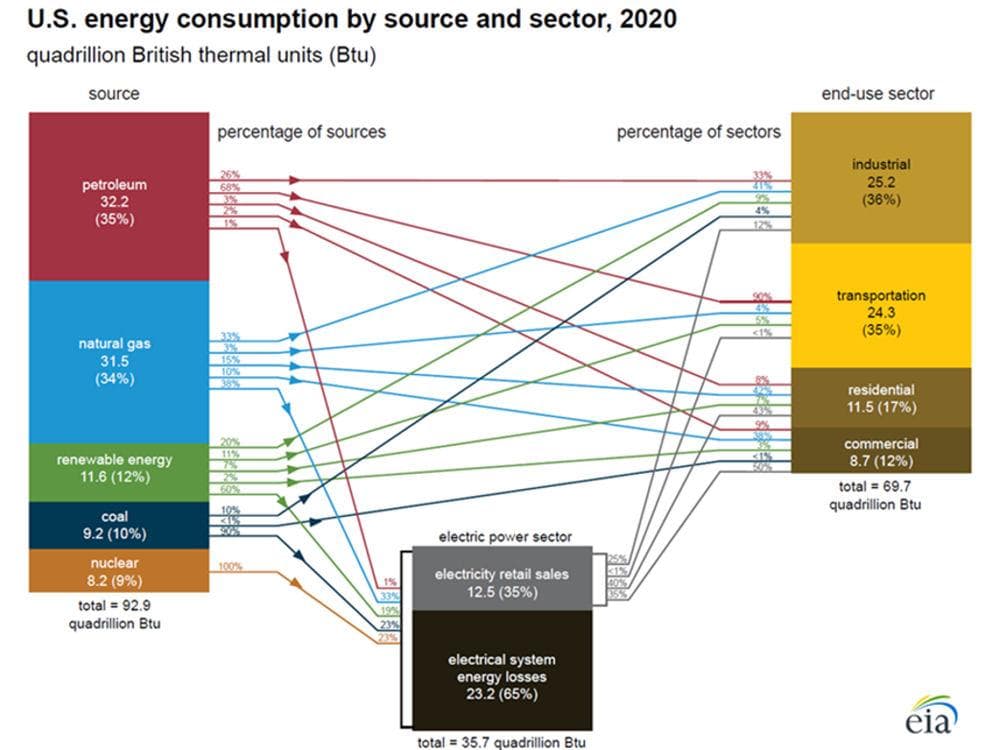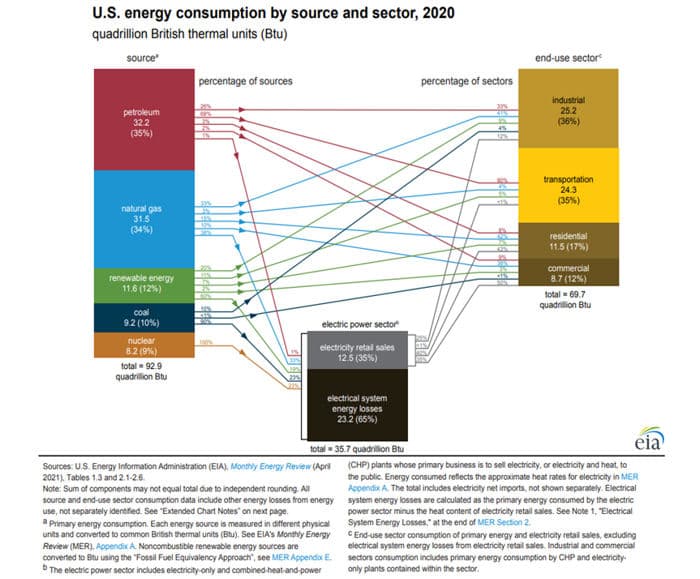The US EIA graph below summarizes the sources and uses of energy in the US economy. The Administration has established a series of progressive goals to eliminate fossil fuel consumption in the energy economy and achieve Net Zero emissions by 2050.

Currently, electricity from all sources represents 12.5 quads of the total of 69.7 quads of energy consumed in the economy, or approximately 18% of total energy consumption. Net Zero would require that all uses of petroleum, natural gas and coal which result in the emission of CO2 be replaced by renewable electricity. This would specifically exclude the petroleum and natural gas consumed in the production of chemicals and plastics. Therefore, approximately 30 quads of petroleum, 30 quads of natural gas and 9 quads of coal end-use consumption would be transitioned to renewable electricity by 2050.
Assuming that the Industrial and transportation electric end uses would average three times the efficiency of the fossil fuel end uses and that the residential and commercial electric end uses would average twice the efficiency of the fossil end uses, renewable electricity generation would be required to replace not only 7 quads of fossil fuel-generated electricity but also provide approximately 7 quads to replace fossil energy consumption in the industrial sector, approximately 7 quads to replace fossil energy consumption in the transportation sector and approximately 5 quads to replace fossil energy consumption in the residential and commercial sectors of the economy.
The combined effect of these energy transitions is to approximately quadruple current electricity demand and consumption in the economy. US electric utilities currently operate approximately 850 GW of fossil-fueled electric generation capacity, which historically operates at approximately a 40% system load factor and represents an approximate 20% capacity reserve margin relative to peak demand.
US EIA uses a 45% capacity factor for wind and a 30% capacity factor for solar PV generation. Therefore, a combination of wind and solar generation would have a capacity factor similar to the grid capacity factor. However, current grid generating capacity, with the exception of wind and solar generation, is dispatchable to meet contemporaneous grid demand. Wind and solar generation require storage to render them dispatchable. The storage system design must accommodate timing differences between peak generation and peak demand, multi-day periods of low/no wind and/or solar availability and seasonal variations in capacity factor. Currently, storage systems capable of multi-day and seasonal compensation are unavailable.
The transition of the existing electric grid to renewable generation is currently being accomplished by relying on conventional generation sources to supply the grid during periods of low/no wind and/or solar availability. However, the requirement to discontinue operation of existing fossil generation capacity, combined with the increased demand and consumption which would result from the electrification of all current fossil fuel end uses in the industrial, transportation, residential and commercial sectors of the economy would require that all additional renewable generating capacity be combined with adequate storage to render the capacity dispatchable, plus the additional generation capacity necessary to recharge depleted storage while still meeting the contemporaneous demand of the grid.

